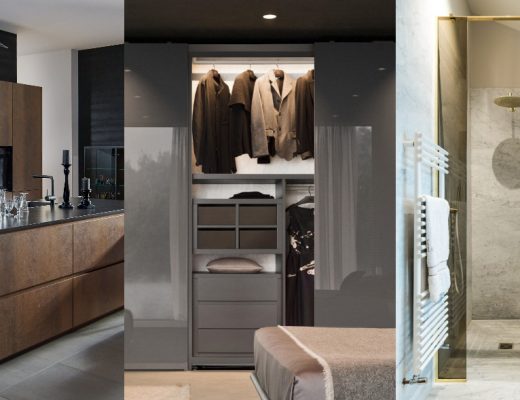We are powering up to give you the lowdown on kitchen sockets – from what’s on offer to where to position them so you can maximise style, practicality and safety…
The question of where to put your kitchen sockets may seem mundane, but with so many appliances and gadgets in our lives requiring power, it is a question that is definitely worth considering when planning your new space. And, it’s finishing touches such as these that can elevate your design from good to great.
So, to help you easily plan your power solutions, KBB journo Francesca Seden has asked the experts for their top tips.

So, where should you put your kitchen sockets?
Ally Dowsing-Reynolds, co-founder at Dowsing & Reynolds, says the key is to think about how your kitchen sockets can make your everyday life easier.
Firstly, she suggests making a list of your large, ‘always on’ appliances such as your cooker, dishwasher, and washing machine. As these power sockets are often out of sight, what they look like is of little consequence, so there’s no need to splurge on design-led options.
Next, make a list of all your most-used smaller appliances – kettle, toaster, microwave, coffee machine etc. – and make sure you have enough sockets to avoid plugging and unplugging things on a daily basis.
Mike Whitfield, luxury interior expert at Lusso, explains that, for kitchen appliances where plug sizes vary, ensuring that sockets are positioned with enough space for larger plugs is key to both usability and aesthetics. “Install sockets with clear space from wall tiles, counters and corners to allow seamless functionality and prevent misalignment.”


Islands and breakfast bars
It’s important to think about what other gadgets might need charging such as phones and laptops. For example, if you have a split-level island with a dining area or breakfast bar attached, it might be best to opt for double sockets with an in-built USB-C charger on the side of the island, as the kids can sit and do their homework while charging their devices. Additionally, if someone in the household uses the kitchen to work from home, carefully consider socket placement to accommodate them too.

Cassie Jones, brand manager at Masterclass Kitchens, adds: “For coffee lovers or breakfast nook users, concealed sockets inside cabinetry allow appliances to stay plugged in but out of sight. It minimises worktop clutter while keeping the appliances in easy reach for daily use. With new compact socket designs, these can be easily integrated without taking up too much cabinet space.”

What sockets should I choose?
In terms of what sorts of sockets to choose, there is a mix of types available on the market. Think aesthetically pleasing wall options to power anything on main worktops and solutions for under the counter or island, which can blend in or contrast with your décor, and pop-up sockets perfect for a seamless look.
Plus, there are also plenty of finishes for you to choose from these days – from chrome and aged brass to clear and customisable options. As for pop-up solutions, if you go bespoke, your kitchen designer might be able to factor in a sleek pop-up socket which matches your worktop and sits flush when not in use.




Good to know
Finally, before you purchase any sockets you should consult with an electrician to ensure they’re the correct amp, and that they have the correct IP-rating for their intended use. Also, think about your lifestyle and consider which option is safer for your household. For example, it’s safer to plug appliances into a pop-up solution on the top of the counter, rather than under the overhang of an island, where children could accidentally pull the wires.








